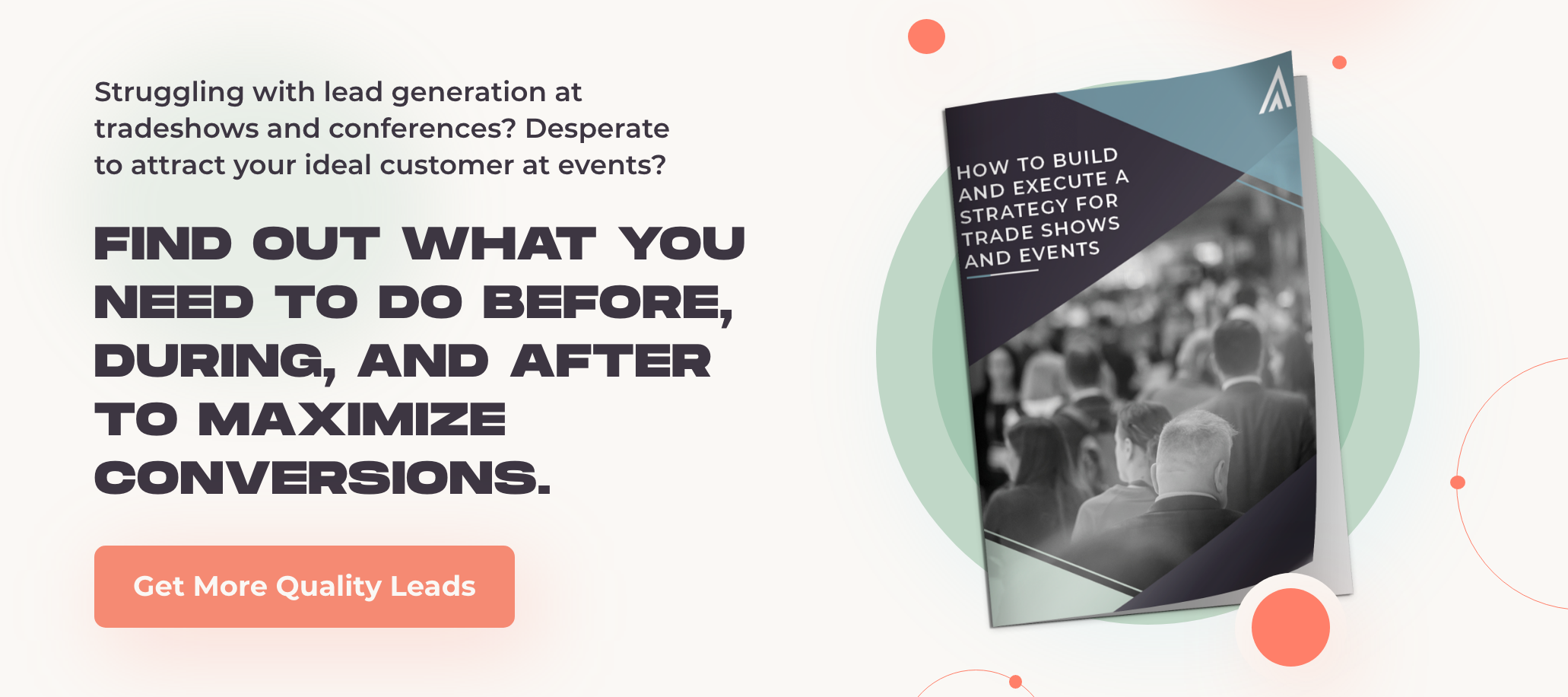No matter your niche, industry events can help build brand awareness and offer high-touch engagement opportunities with prospects and clients in real time. Still, exhibiting at trade shows is one of the most costly and resource-consuming initiatives for marketing teams — so it’s important to make every moment count.
While there are many ways to capture lead data at events, the question for marketing teams is: Did we meet our event goals?
Physical and digital contact scanners are made for just that: gathering contact information, nothing more. Without automation and other efficiencies, the trade show lead generation process can become a bottleneck, costing teams time and money.
That’s why we recommend using an integrated conversion tool like HubSpot’s lead capture forms to organize and nurture trade show leads. HubSpot forms capture lead information and automate leads through the sales funnel, all in one centralized CRM.
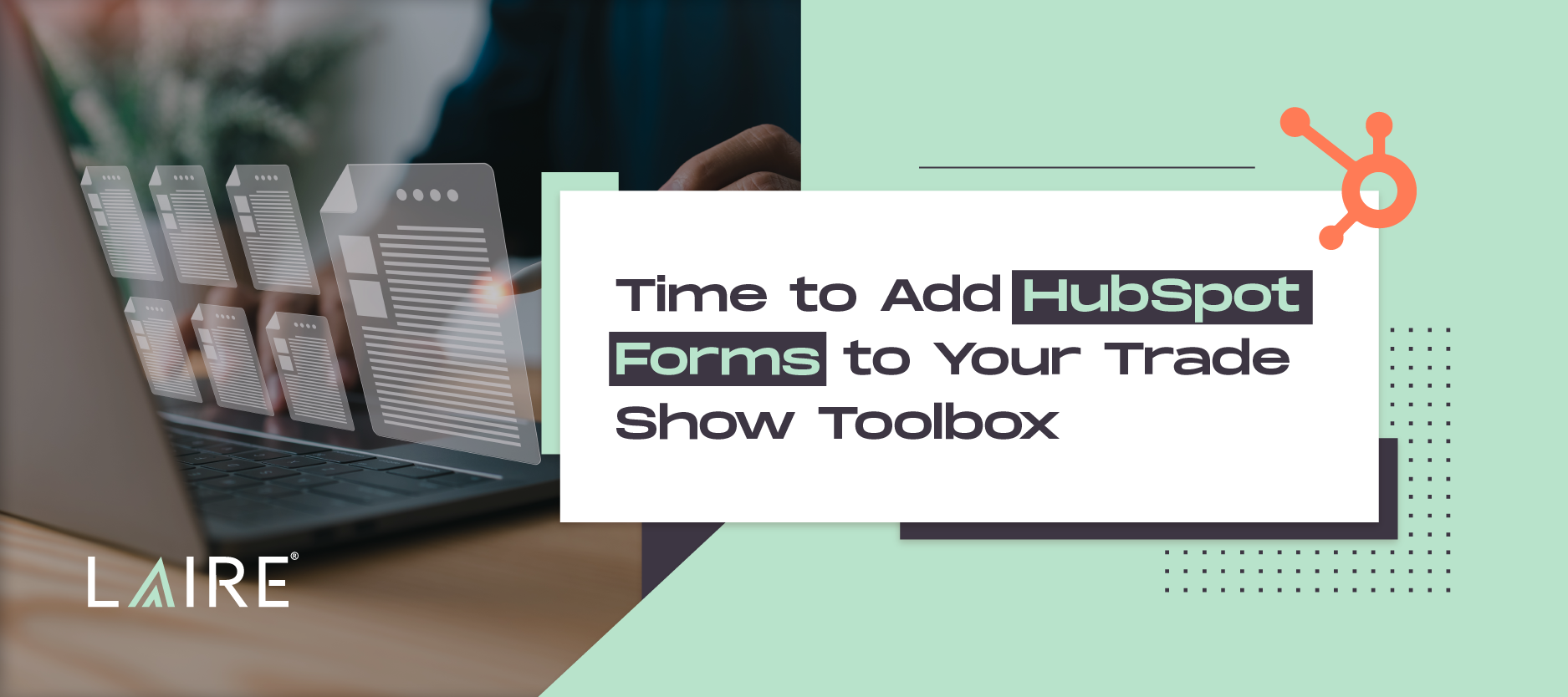
Benefits of HubSpot Forms for Lead Generation
Physical and digital scanners or business cards in fishbowls do not capture lead conversions as effectively anymore. Manual data collection gives teams a limited view of the contact. Even imported data from an attendee list put teams at a disadvantage.

Contacts who have not opted into marketing information cannot receive marketing materials until they do so. Since most customers are not ready to buy during a first conversation, it’s crucial they first learn more about a company’s products and services as they relate to their individual needs.
HubSpot forms are effective due to their role within the HubSpot ecosystem. Forms are one of many interrelated tools that reach all conversion touchpoints: SEO, email, social media, and so much more.
In using HubSpot forms to convert attendees, teams are able to communicate with contacts after the event, continuing the conversation off the showroom floor.
How HubSpot Forms Capture and Nurture Trade Show Leads
HubSpot forms are not limited by event size. For larger events, try to have the form set up on multiple touchpoints (i.e., a tablet on a stand for attendees to complete as they come). For smaller events, it may make more sense for attending team members to have a tablet with the form to complete on the spot.
The question then becomes: How do we entice attendees to complete the form?
It’s a misconception that trade show offers have to be expensive. In reality, they can look like anything that would appeal to your target buyer in the context of your brand. For example, giveaways can be something as simple as a free product or offer.
For smaller events, having a small giveaway with the HubSpot form as a conversion point should be sufficient.
However, teams should scale up at larger trade shows. There are potential customers who may have missed an opportunity for a conversion simply due to the nature of the larger trade show floors. This is where teams can get creative:
- Sponsor signage around the show with QR codes: These can link to anything, including the HubSpot form capturing lead data!
- Take attendees on a scavenger hunt: For example, HubSpot forms and a property increase workflow can be used to enable a ‘scan x amount of QR codes’ in fixed places around the showroom floor to be entered for a giveaway.
- Leverage the event’s existing resources: Use the conferences’ app to post updates that link to the show’s HubSpot form.
The most important thing to remember here is that trade show floors are the ultimate hub of sales conversations, business cards, and of course — swag. Vendors that prioritize interactive experiences in a sea of similar-looking booths make a greater impression than those that don’t.
Best Practices for Using HubSpot Forms at In-Person Events
A successful trade show conversion strategy begins well before the event. Start by creating a HubSpot form specific to the event and customize the form properties to include necessary information, such as:
- Name
- Job Title
Add the form to a landing page that is specific to the event. Keep in mind that this page should not be accessible via your website. Make sure to update the settings to reflect ‘Public - No index’ while staging the event’s landing page.
Form Settings in a Trade Show Environment
We recommend blocking free email providers by checking the ‘Block free email providers’ box in the form’s email settings. Most buyers will have a company-hosted email suffix, and this ensures that the contacts in your CRM are associated with a real business.

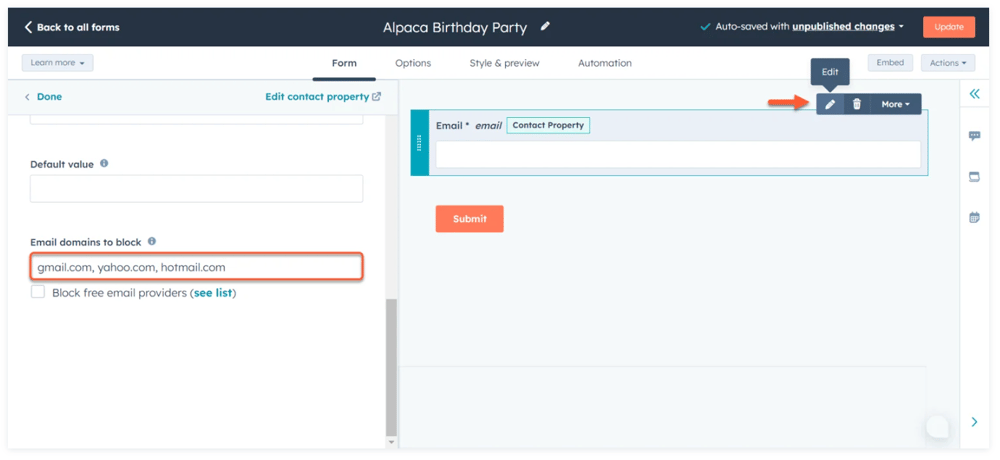
Host your form on an incognito browser or toggle on the ‘Always create contact for new email address’ in the Options tab during form setup. Enable shared device/kiosk mode to ensure contacts aren’t sharing cookies or website tracking behavior.
Create a Trade Show Conversion Path With HubSpot Forms
HubSpot forms are (literally) built for automation. While most event lead capture vendors populate contact data in a CRM, HubSpot forms take it a step further, allowing teams to control what happens after the handshake.
Form Strategy and Setup
Start by setting goals and assigning benchmarks to quantify the event’s goal. Example benchmarks for a lead generation goal could be:
GOAL: We will generate 50 new SQLs at ABC Event 2024.
There are a few ways we can pull into the event’s form to track whether or not this goal was met. Let’s break this down:
Use Contact Properties to Build Your Form
We will rely on HubSpot’s Contact Properties to set up the event’s form. To get accurate data, we’ll use the properties as they relate to the goal:
- Contact Name: First and last
- Contact Email: Restrict free email provider submissions
- Contact’s Company Name: Especially for B2B teams!
- Lifecycle Stage: Use a hidden form field* to track SQLs from the event.
- Bonus: Giveaway or subscription opt-in checkbox
Creating a Trade Show Conversion Form in HubSpot
After identifying the properties that will track that goal, it’s time to build it out.
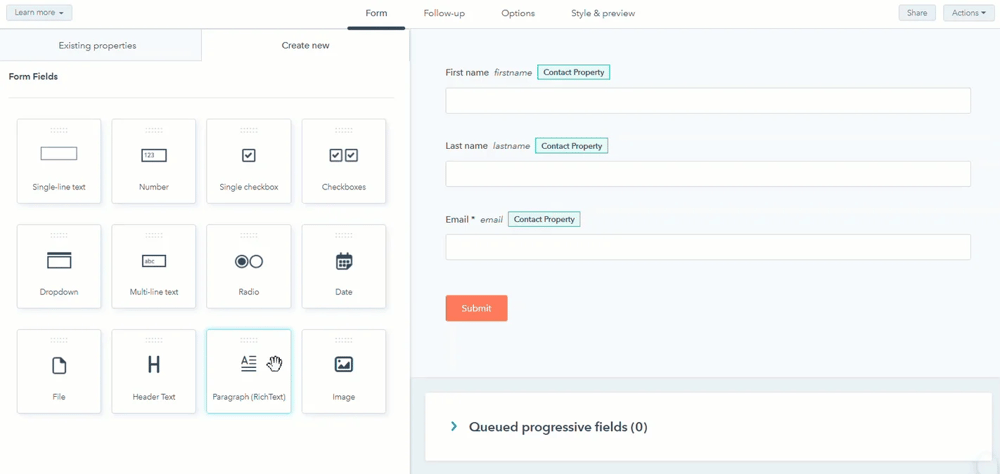
The first three properties are straightforward: We will be asking contacts to add their name, email, and company name. But what about data like Lifecycle Stages?
Use HubSpot Forms Hidden Fields
HubSpot uses hidden form fields to add value to a property without requiring the contact to fill in the property’s field. Teams can use hidden fields to denote a contact’s internal business unit, increase property values to track a giveaway and attribute custom source data to the contact (i.e., Conversation at ABC 2023).
In this example, we will use HubSpot’s Hidden Field functionality to automatically assign lifecycle stages based on event attribution properties. If the contact’s information meets SQL criteria, HubSpot can automatically update the contact’s lifecycle stage.
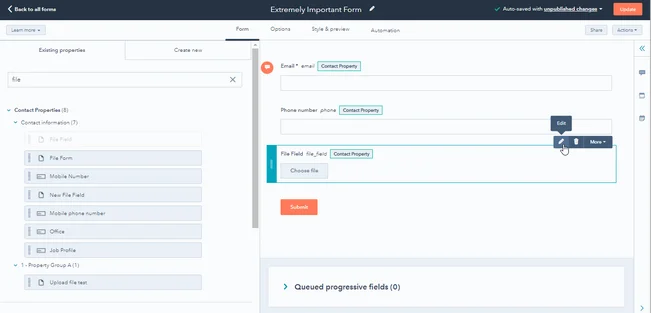
And that’s it! Your form is now ready to add to a landing page and automate a lead conversion campaign. HubSpot has a treasure trove of knowledge base articles and HubSpot Academy courses to help with the nuances of setting up forms in HubSpot.
Creating a Campaign in Hubspot to Track Trade Show ROI
You’ve set up for Hubspot forms for your upcoming trade show, but now, you’ll likely need to track your Return on Investment (ROI). We have good news! HubSpot has a nifty feature that allows you to tie all of your assets together and attribute revenue to your trade show efforts. Let’s dive into creating a campaign that links your landing page, the form you’ve created, and other assets.
Start a New Campaign
- Log in to your HubSpot account and navigate to the “Marketing” tab in the menu, and then down to “Campaigns”.
- From the Campaigns page, click on the “Create a Campaign” button. Make sure to give your campaign a descriptive name so that you, and any users, will know what it is at a glance.
Define Your Goals and Objectives
Every successful campaign starts with clear goals. Ask yourself what you want to achieve with your trade show presence. Is it lead generation, brand awareness, or something else? In your campaign settings, set your primary goal objectives – these will guide your entire campaign.
Connect Your Landing Page and Form
To attribute revenue and ROI, you’ll need to connect your landing page and form (as well as any other relevant assets) to your campaign.
- In your campaign, click on the assets tab under “see details”.
- Choose “Add Assets”, and add existing assets, or create new assets, using the left menu.
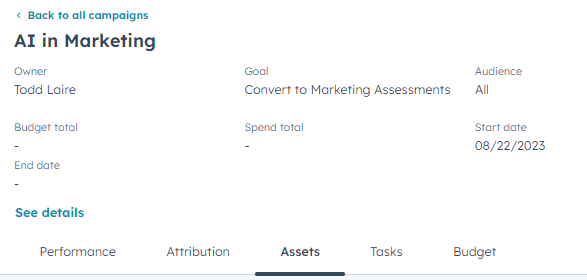
Monitor & Analyze
Now that everything is linked, HubSpot will start tracking the performance of your trade show campaign. You can monitor metrics like leads generated, contacts created, and even influenced revenue attributed to your trade show efforts.
Calculate ROI
To calculate ROI, compare the total cost of your trade show participation (including booth rental, travel, marketing expenses, etc.) to the revenue generated as a result of the campaign. HubSpot will help you attribute revenue to your trade show effort, making this calculation a breeze. Remember, ROI calculations may vary depending on your goals and how you measure success! Make sure to adjust your campaign accordingly.
Have a Post-Submission Message With Form Automation
Make sure that contacts hear from you as soon as possible. Users can now set up workflows in the HubSpot Forms tool during the setup process.
Create a follow-up email for attendees who have converted on the form that is consistent with your company’s booth experience (e.g., include a picture of your booth in the email header).
Teams can also use HubSpot automation to assign contact owners, and Sales Hub users can create internal tasks and workflows to follow up with trade show contacts. Further, contacts can be enrolled into separate marketing nurtures if they have opted into receiving marketing materials.

Attending and exhibiting at industry trade shows are highly effective ways to increase revenue and meet buyers face-to-face.
Marketing teams use a significant amount of bandwidth to run a trade show campaign and every efficiency matters. Using tools that integrate with or are included in your CRM software can streamline the lead capture process, providing functionalities that scanners can’t.
HubSpot forms are an integrated conversion tool that gives teams a 360° view of the buyer. Teams can use forms to automate lead flows and keep your brand top-of-mind among prospects.
Still, forms are just one of the many tools available in HubSpot’s robust ecosystem; there’s so much more to this platform. Are you making the most of your HubSpot investment?

